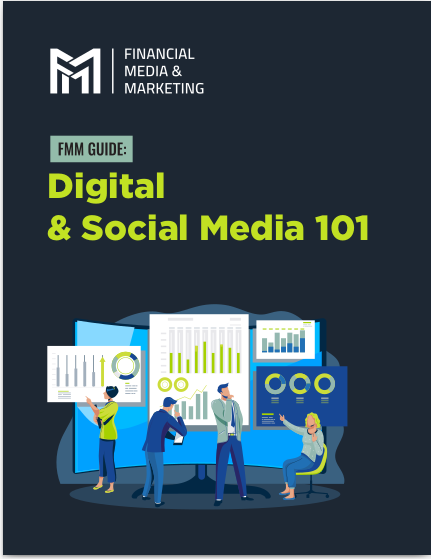Key Takeaways:
-
If your website isn’t attracting leads, loading slowly, or looking outdated, it’s time for a revamp.
-
A modern, mobile-friendly, and conversion-optimized site can significantly boost your client base.
Is Your Website Costing You Clients? Here’s How to Tell
Your website isn’t just a digital business card—it’s your first impression, your lead magnet, and your conversion machine. If it’s outdated, confusing, or just not performing, you’re likely losing potential clients without even realizing it. Here are five signs your financial advisor website desperately needs an overhaul—and what to do about it.
1. Your Website Looks Like It’s Stuck in the Past
If your website still looks like something from the early 2010s (or worse, the 2000s), potential clients will assume your services are just as outdated. An old-fashioned design signals that you’re not keeping up with modern financial trends—and that’s not the impression you want to give.
What’s Considered Outdated?
-
Flash-based animations (completely obsolete now)
-
Stock photos that scream ‘generic’
-
Tiny text that’s hard to read on mobile devices
-
Cluttered layouts with too many elements crammed together
-
Bright neon colors or excessive gradients that feel overwhelming
-
Lack of branding consistency with mismatched fonts and colors
Fix It:
-
Invest in a modern, sleek, and clean design with plenty of white space.
-
Use high-quality, custom visuals that reflect your brand.
-
Make sure your website is fully responsive, meaning it looks great on all screen sizes.
-
Keep branding consistent with clear typography, a professional color scheme, and a well-defined style.
2. You’re Getting Visitors, But They’re Not Converting
A website without conversions is like a financial plan without a goal—it’s pointless. If people are visiting your site but not booking consultations, something is wrong.
Red Flags That Your Website Isn’t Converting:
-
High bounce rate (people leave within seconds)
-
Low engagement (no one clicks around or interacts)
-
No clear call-to-action (CTA) (visitors don’t know what to do next)
-
Overly complicated navigation that confuses visitors
-
Long, tedious contact forms that discourage sign-ups
Fix It:
-
Make sure every page has a clear, compelling CTA (like “Schedule a Free Consultation” or “Download Your Financial Roadmap”).
-
Use lead magnets like free guides, webinars, or reports to capture emails.
-
Place contact forms strategically, not just on the contact page but on high-traffic pages as well.
-
Simplify navigation and reduce unnecessary steps for booking or inquiries.
-
Create an intuitive user experience with clear paths to conversion.
3. Your Site Loads Slower Than a Paper-Based Portfolio Review
If your site takes more than three seconds to load, you’re losing visitors. Online users expect instant access—and Google agrees. Slow websites not only frustrate users but also get penalized in search rankings.
Causes of a Slow Website:
-
Large, uncompressed images
-
Too many third-party plugins
-
Outdated hosting services
-
Unoptimized code with bloated scripts
-
Videos that autoplay without compression
Fix It:
-
Optimize images by compressing them without losing quality.
-
Minimize plugins and scripts that slow down your site.
-
Upgrade to a fast, reliable hosting provider with speed-optimized servers.
-
Clean up code by removing unnecessary scripts and files.
-
Enable browser caching to store frequently accessed elements.
4. It’s Not Mobile-Friendly (And That’s a Big Problem)
In 2025, mobile searches dominate desktop searches. If your website isn’t optimized for mobile devices, potential clients are bouncing before they even see your value.
Signs Your Website Isn’t Mobile-Friendly:
-
Text is too small to read
-
Buttons are too close together
-
Images and layouts look distorted
-
Menus are difficult to navigate on a touch screen
-
Pages require pinching and zooming to view properly
Fix It:
-
Use responsive design that automatically adjusts to any screen size.
-
Ensure all buttons and forms are touch-friendly.
-
Test your site on multiple devices to identify usability issues.
-
Adopt a mobile-first approach by designing for small screens first.
-
Keep navigation simple and finger-friendly with large tappable areas.
5. Your Content Is Thin, Irrelevant, or Non-Existent
If your site isn’t offering valuable, up-to-date content, visitors won’t stick around. Financial clients are looking for trustworthy information, and your website should provide that.
Content Issues That Drive Visitors Away:
-
No blog or resource section
-
Outdated information on financial planning and regulations
-
Walls of text with no clear structure
-
Lack of personalization that makes the content feel generic
-
No clear storytelling that connects with potential clients
Fix It:
-
Create valuable, informative content that addresses common financial concerns.
-
Use videos, infographics, and concise text to make information digestible.
-
Keep regulatory updates and financial tips current to showcase expertise.
-
Use a mix of short and long-form content to cater to different audience preferences.
-
Add testimonials, case studies, or success stories (without naming real clients) to build credibility.
Time for a Website Upgrade? Here’s Your Next Move
If your website is guilty of one or more of these issues, it’s time to take action. A modern, well-designed website isn’t just a ‘nice-to-have’—it’s essential for attracting and converting leads. Investing in a revamp now means more clients, better credibility, and a stronger online presence in the long run.
Steps to Take Immediately:
-
Conduct a full audit of your website’s design, performance, and user experience.
-
Identify key problem areas that are driving visitors away.
-
Work with a professional web developer or use a website builder with modern templates.
-
Focus on speed, responsiveness, and conversion optimization.
-
Track performance using analytics tools and continuously tweak your approach.
A strong online presence isn’t a luxury—it’s a necessity in 2025. Your website should be working for you 24/7, bringing in leads and positioning you as a trusted financial expert. If it’s not doing that, it’s time for an overhaul.










